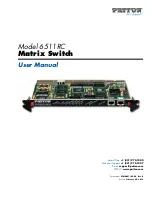
Configuring Discovery
Configuring CDP
Cisco Small Business 200 1.1 Series Smart Switch Administration Guide
81
7
•
CoS for Untrusted Ports
—If Extended Trust is disabled on the port, this
fields displays the Layer 2 CoS value, meaning, an 802.1D/802.1p priority
value. This is the COS value with which all packets received on an untrusted
port are remarked by the device.
•
Request ID—Last power request ID received echoes the Request-ID field
last received in a Power Requested TLV. It is 0 if no Power Requested TLV
was received since the interface last transitioned to Up.
•
Power Management ID—Value incremented by 1 (or 2, to avoid 0) each time
any one of the following events occur:
-
Available-Power or Management Power Level fields change value
-
A Power Requested TLV is received with a Request-ID field which is
different from the last-received set (or when the first value is received)
-
The interface transitions to Down
•
Available Power—Amount of power consumed by port.
•
Management Power Level—Displays the supplier's request to the powered
device for its Power Consumption TLV. The device always displays “No
Preference” in this field.
Displaying CDP Neighbors Information
The
CDP Neighbors Information
page displays CDP information received from
neighboring devices.
After timeout (based on the value received from the neighbor Time To Live TLV
during which no CDP PDU was received from a neighbor), the information is
deleted.
To view the CDP neighbors information:
STEP 1
Click
Administration
>
Discovery - CDP
> CDP
Neighbors Information
. The
CDP
Neighbors Information
page opens.
This page displays the following fields for the link partner (neighbor):
•
Device ID
—Neighbor’s device ID.
•
Local Interface
—Number of the local port to which the neighbor is
connected.
•
Advertisement Version
—CDP protocol version.
















































